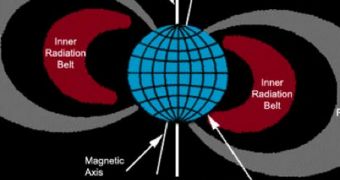Last Saturday, September 29, officials in charge of the Canadian Satellite Design Challenge announced that a team of students at the Concordia University, in Montreal, won first place in the competition.
The group designed a CubeSat-class satellites for studying the Van Allen radiation belts around Earth, an objective similar to the one driving the newly-launched NASA RBSP twin spacecraft.
The CubeSat's main mission will be to map plasma changes that occur in a small portion of the radiation belts. Depending on rocket availability and costs, the mission may launch sometime between 2013 and 2014. The minimum value of the associated contracts is $300,000.
“Experiential learning is absolutely critical for students. It's so key that we get our hands dirty and work on projects. Otherwise, we're passively learning and we don't learn as much,” says Nick Sweet, a member of the team, as quoted by Space.

 14 DAY TRIAL //
14 DAY TRIAL //